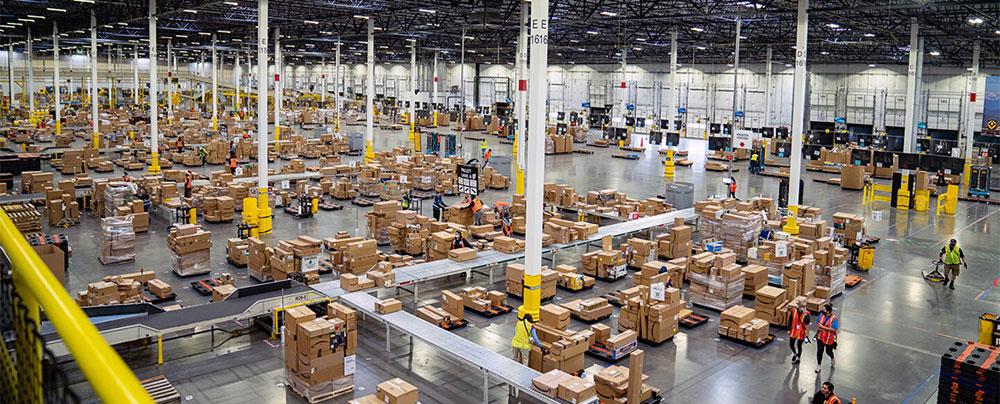Amazon reduces packaging waste with machine learning
Amazon is tackling packaging sustainability at scale with several artificial intelligence (AI) technologies.
In a corporate blog post, Amazon described how it is using machine learning (ML) approaches and a combination of natural language processing and computer vision to determine how to use the right amount of packaging for the hundreds of millions of products it ships.
According to Amazon, these tools have helped it reduce per-shipment packaging weight by 36% and eliminating more than a million tons of packaging, equivalent to more than 2 billion shipping boxes, over the past six years. To make a prediction about whether a given product could be safely shipped in a particular package type, Amazon built an ML model based largely on text-based data from online product listings such as item name, description, price, and package dimensions.
The model was trained on millions of examples of products successfully delivered in various packaging types, and on examples of products that arrived damaged in given packaging types. Amazon has access to almost real-time feedback when a product is not sufficiently protected by its packaging, because customers report it via several online feedback mechanisms.
The model learned that certain keywords were particularly important when making packaging decisions. For example, keywords that indicated that a padded mailer would not be the right packaging included “ceramic”, “grocery”, “mug” and “glass”. These products were better shipped in a box. Keywords that suggested mailers were the right choice included “multipack” and “bag.” Those indicated the product might already have some form of protective packaging.
To identify product packaging at scale, Amazon deployed computer vision technology to include images of products from computer-vision tunnels equipped with cameras that capture images of items from multiple angles as they pass through conveyor belts at fulfillment centers.
Incorporating both text-based and visual data improved the ML model’s performance by as much as 30%, compared with using text-based data alone. The technology is currently being applied to product lines across North America and Europe, automatically reducing waste at what Amazon says is a growing scale.
Amazon says the new insulated packaging is the latest step in the company’s commitment both to the Climate Pledge, a global initiative it cofounded in September 2019 that commits to meeting the Paris Agreement 2050 decarbonization goal 10 years early, and to building a sustainable business.
In November 2021, the company unveiled new sustainable insulated packaging, made from recycled paper and curbside-recyclable, for delivery of select grocery products in time for Thanksgiving. Amazon is also working toward making all of its shipments net-zero carbon through Shipment Zero, with a goal of delivering 50% of all shipments with net-zero carbon by 2030.
“When the model is certain of the best package type for a given product, we allow it to auto-certify it for that pack type,” said Matthew Bales, manager, research science, Amazon. “When the model is less certain, it flags a product and its packaging for testing by a human.”
“It’s a triple win,” says Bales. “Reduced waste, increased customer satisfaction, and lower costs.”



